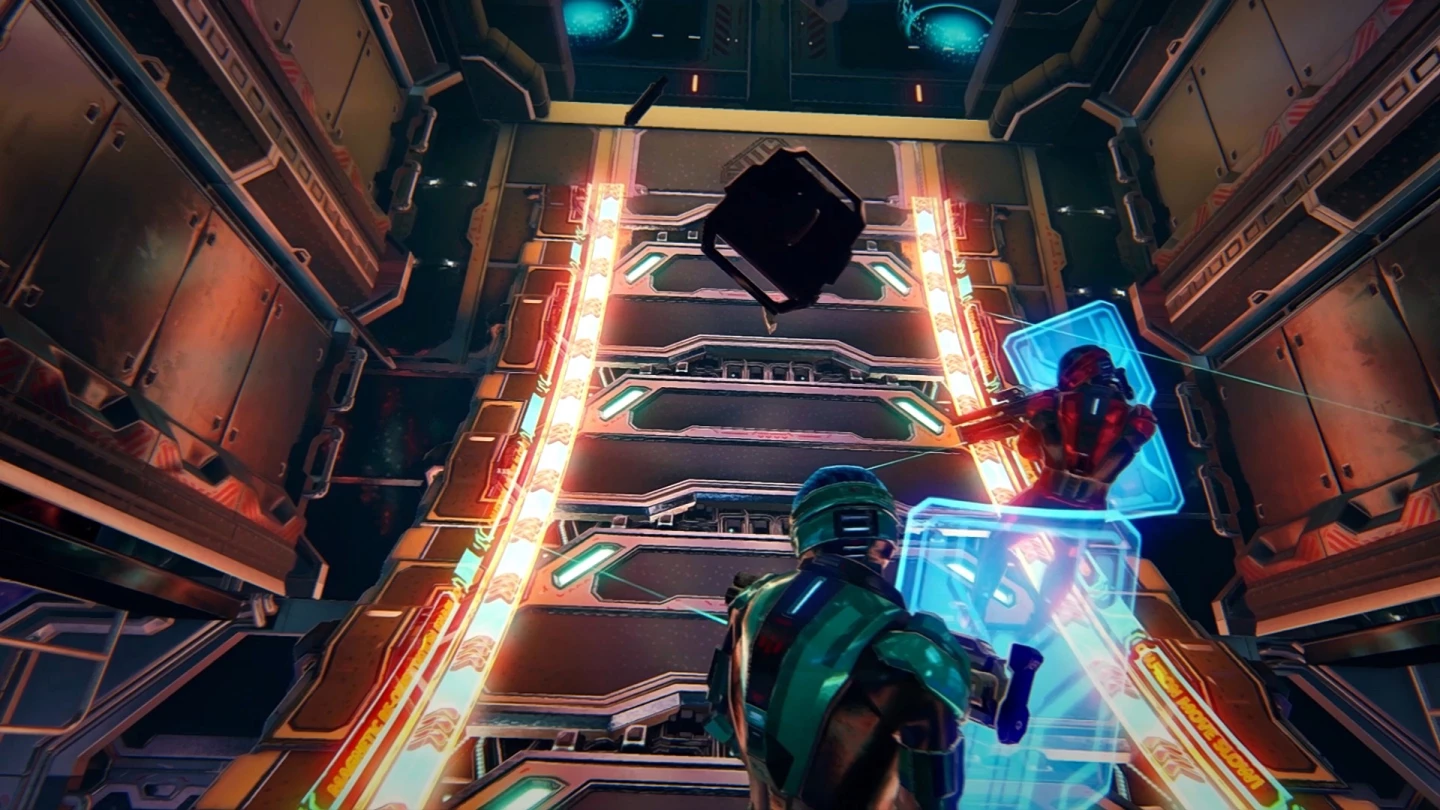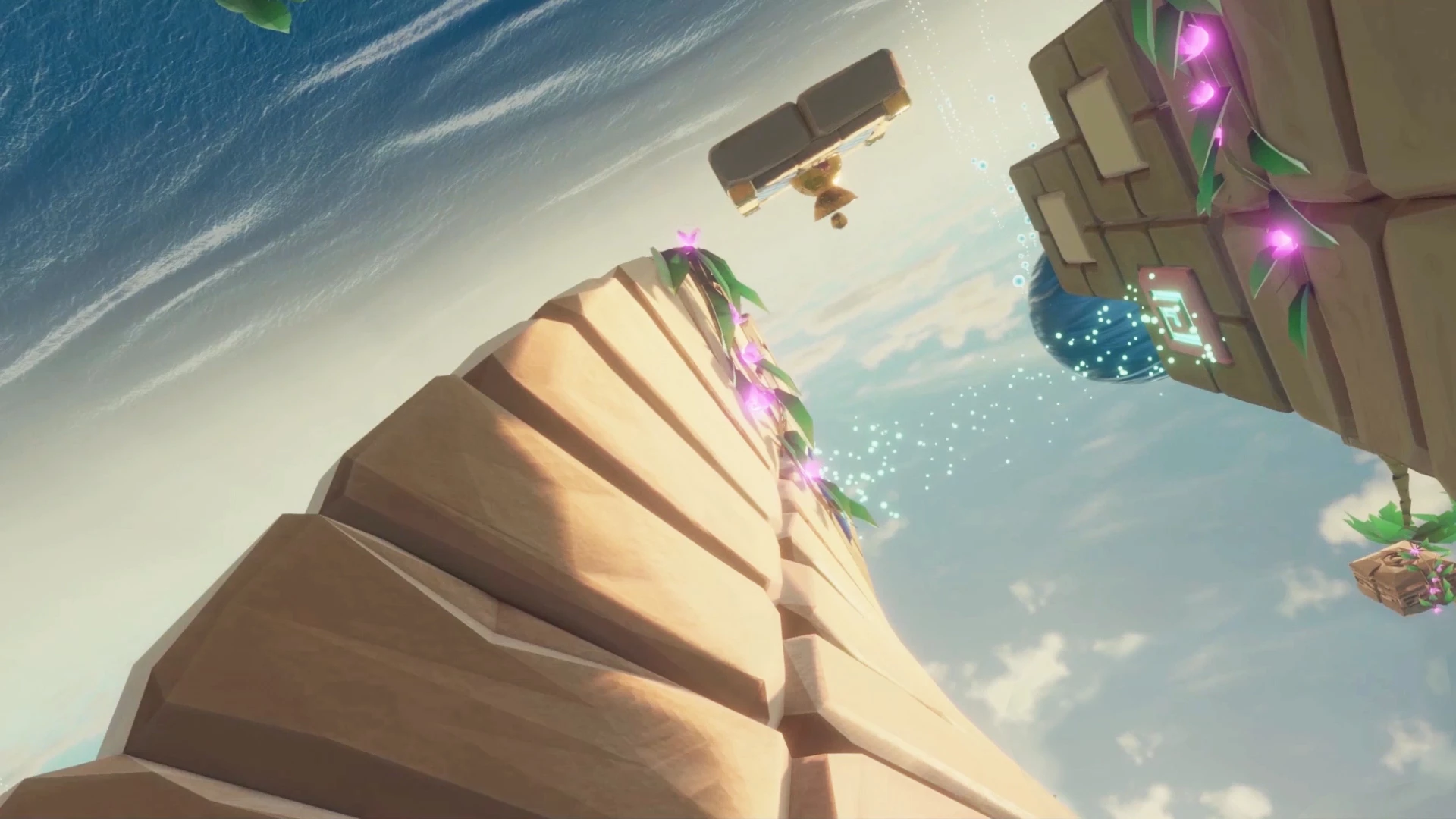The concrete floor was perfectly flat, and roomy enough to park a fleet of buses – but you wouldn't know it looking at our editor Noel, who was stumbling slowly forward like a pulled-over driver who's not getting his license back. That's the power of Zero Latency's free-roaming virtual reality system, and our second trip into that Melbourne warehouse revealed just how many mind-bending new tricks the team has come up with over the last few years.
The New Atlas crew last checked out Zero Latency about two years ago, when the company was just about to open its second site – in a Tokyo arcade – and launch a new game. Fast forward to now and the tech has improved, the game library has expanded and there are 18 different sites in nine countries. So we thought it was about time we went in for a rematch – and we were not disappointed.
What is Zero Latency?
If you've ever used an Oculus Rift or an HTC Vive, you'll understand the immersion of being able to move through a virtual world by physically walking around your living room. But not only is that space fairly small, there's always the risk of tripping over furniture and cables, or putting your fist through the TV if you get a bit carried away.
There's also the fact that home VR systems are by design a bit isolating. Sure, it's fun to watch from outside the virtual world as your friends make fools of themselves, but it's much harder to jump in and play along.
With a much bigger play space and room for up to eight players, Zero Latency kicks the VR experience up several notches. Thanks to a computer stashed inside a backpack, players are effectively untethered, while an array of all-seeing eyes track your every movement. Those pieces all come together to let you walk freely around a huge warehouse that's been digitally redecorated to look like a space station, or a zombie-ridden city, or a peaceful alien world.

Mind you, the games themselves are pretty straightforward and, if you're a seasoned gamer, not particularly groundbreaking. But that's crucial for this kind of setup. The technology is the real star of the show, and the games need to be simple enough to pick up and play, so that anyone can give it a red-hot go.
As we expected, the technology and the experience of Zero Latency were just as incredible as they were the first time we tried it. But the team has clearly not been resting on its laurels over the last few years – there are a few key improvements that make it better than ever.

Hardware updates
For starters, the kit itself has been updated, but we wouldn't have noticed had the team not told us about it afterwards. Last time we played we were using Oculus Rift headsets, fitted out with a custom tracking system. For the last 18 months or so, Zero Latency has been running on the Open Source Virtual Reality (OSVR) platform which, as the name suggests, is much more flexible and customizable.
"We actually worked really closely with Sensics, which is the company that does the design work for OSVR," Scott Vandonkelaar, CTO of Zero Latency, tells New Atlas. "We worked a lot with them to essentially customize it to fit what we need, and they actually ended up tweaking their products on their end to match some of our recommendations, which was really good."
The backpack computers powering the whole thing have had a tune-up too, allowing them to render more detailed VR environments faster. And as we found out, the games haven't just improved technically, but creatively as well.

Engineerium
Rather than diving nose-first into a shooting frenzy, first we found our feet in a slower-paced puzzle game called Engineerium. Well, most of us found our feet okay – this was the game that had poor Noel shuffling carefully along the flat, clear warehouse floor on a virtual tightrope.
There are no guns in this one. Instead, players step into the ghostly shoes of some kind of tribal alien race, wandering around magical floating ruins. Your goal sounds pretty simple: walk to the glowing spots around you. The tricky part is that the path moves and changes, and gravity loses all meaning as the floor curves up the walls and across the ceiling. This game, according to Vandonkelaar, was born out of jam sessions where the team tried to get away from standard genres and ran amok with whatever they felt like.
"We were just experimenting with random ideas," says Vandonkelaar. "What can we do inside this big, free-roam VR environment that you just can't do anywhere else, or doesn't have the same impact? And we found that we could do this crazy walking-up-a-wall thing. So we built the concept around just doing really cool stuff. But then it was nice to take away the controller, so the players are just getting used to walking around the environment, and experiencing virtual reality a little bit first."
It may be a simple "walking puzzle" game, but Engineerium demonstrates some extremely creative use of space. In the original Zombie Outbreak game, your mental compass could usually keep track of where in the warehouse you were at any given time. Most of the game had you traipsing back and forth across the same stretch of floor, which felt familiar no matter what virtual setting was superimposed over it.
But this time, the game's twisted paths, backtracking and total disregard for physics sent that mental compass spinning almost instantly. At one point I looked up to see half of our group standing on the ceiling, hanging down so our heads were almost touching. I had to peek under my VR visor to make sure the real-world players weren't actually standing on the ceiling somehow. Nope, they were off to my left, still rooted to the same concrete floor.
The illusion itself is impressive, but it's not even ruined by pulling back the curtain to see how it works – to the contrary, it's an utter delight to see how the real and virtual cogs of the system fit together. In the real world, we'd split into two groups and walked single-file side by side. In the virtual world, the two narrow, parallel paths we were following had twisted so that one was on top of the other, like folding a piece of paper in half. According to the team, designing those environments was just as brain-busting as walking through them.
"It's just the most crazy 3D puzzle," says Vandonkelaar. "You've got people in a physical space, and you have to maintain this perfect physical continuity, and make sure people don't run into each other. But inside the game they're going up walls, they're above each other, on the sides, all sorts of crazy stuff. And then at the end of course, you have to bring everyone back together again."
In our experience, the biggest improvement of the last two years is the team's mastery of their own hardware. They've gotten more inventive with using the physical and virtual space, and blending them together to create an experience you just couldn't get anywhere else.
And that's before we even set foot in the space station.

Singularity
The second game of the day, Singularity, was a bit more hands-on. This time, we were kitted out with a rifle, and pointed towards a space station crawling with killer robots to mow down. It plays a lot like the original zombie shooter, but with a sci-fi skin and that refined sense of space that made Engineerium so immersive.
The game mostly involves moving from room to room, pausing periodically to shoot our way through hordes of rogue robots, drones and mounted turrets. There are no pick-ups to find, but players can swap out their weapon at will, choosing between a burst-fire rifle, a shotgun, a steady laser beam or a punchy railgun.
The world was a bit more straightforward than Engineerium, but there was the odd anti-gravity section – fitting, given the space station setting. Even something as simple as walking down a ramp felt weirdly exhilarating.
Everything did feel smaller than our first outing though, and this was particularly noticeable thanks to the system's tendency to screech at you whenever you were too close to a teammate. If we have one complaint, it's that this safety system is a little too sensitive.
As it turns out, the spaces are smaller, by necessity. The Melbourne warehouse is still the biggest VR play space in the world, measuring 375 sq m (4,037 sq ft), but in order to expand to so many other sites around the world, the company had to rein it in a little.

"It's really, really hard to find 375 sq m in a lot of buildings, basically," Vandonkelaar explains. "We worked that out pretty fast, so we took it down to 200 sq m (2,153 sq ft), and we find that we can fit that into a lot of places. We have a few different shapes that we work to, one's a square, and we've got two rectangular shapes in there. They form our basic configuration, and we just repeat those as much as we can."
Different venues come in different shapes and sizes, but to make sure the experience is the same across the board, the content team now builds everything to fit into 200 sq m. Luckily, they've also gotten much better at hiding that fact, designing environments with corridors and obstacles to separate players, and open spaces that make it look like the world keeps going beyond player boundaries.
Future plans
That worldwide expansion doesn't look like it's slowing down anytime soon. Zero Latency opened up 14 new locations in 2017 alone, and Vandonkelaar says 2018 is looking to be just as busy – if not more so. If there's not a venue near you yet, keep your eyes and ears open this year.
New games are also on the horizon, and in the experimental spirit of Engineerium the team says they'll involve new genres and game types. The next big thing is to pit players against each other, since that's what everybody seems to want to do anyway.
"One of the things a lot of people do, as soon as they get in there, is just start shooting each other," says Vandonkelaar. "Even though that's not the aim of the game, it's just what people want to do. So we've been refining that concept for quite a while, and we've got some great ideas which we're developing right now."

While it might sound simple enough to just turn on friendly fire and let players have at it, translating competitive deathmatch-style games into free-roam VR brings a new set of design challenges.
"It almost seems silly saying it, but it isn't very much fun being shot," says Vandonkelaar. "We want to make experiences that are always fun, it's not just got to be fun to shoot people but it's got to still, in a way, be fun to be shot. In a sense that 'oh damn, they got me, but I'll be better next time.' It really is good fun being able to do some competitive matches, we've had prototypes running for ages, but it's taking time to refine it into something that makes sense in the free-roam VR space."
New content and new locations aren't the only things in the pipeline. We were also given the tantalizing tease of a new hardware announcement, but Vandonkelaar says it's too early to go into details. Whatever that may be, it sounds like we might not be waiting another two years before we dive back into Zero Latency.
Source: Zero Latency






























